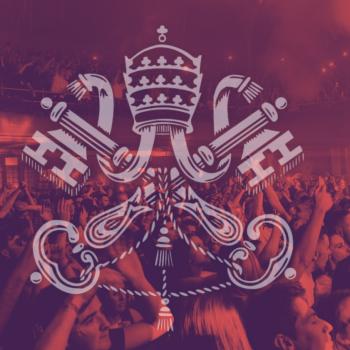Jennifer Schuessler at the New York Times introduces cutting-edge historical scholarship to the masses. Last summer, she published a piece on Mormon history, and this past spring an article on scholarship about American capitalism followed (that piece discussed, among other books, Bethany Moreton’s To Serve God and Wal-Mart). Most recently, Schuessler introduced readers to recent works of history about mainline Protestantism.
For starters, regardless of how readers of this blog feel about the NYT’s coverage of religion, perhaps we can agree that nearly any discussion of the historiography of American religion in a major newspaper is welcome news.
The article on mainline Protestantism, which ran two weeks ago, covered some themes mentioned here several months in the past, namely, that for their numerical strength and for all of the scholarly attention evangelicals have received in recent years, the trajectory of American culture has nevertheless moved more in the direction of mainline values (ecumenicalism, cosmopolitanism and tolerance). As Schuessler writes:
a growing cadre of historians of religion are reconsidering the legacy of those faded establishment Methodists, Presbyterians and Episcopalians, tracing their enduring influence on the movements for human rights and racial justice, the growing “spiritual but not religious” demographic and even the shaded moral realism of Barack Obama — a liberal Protestant par excellence, some of these academics say.
Schuessler discusses the work of Matthew Hedstrom, David Hollinger, Elesha Coffman, and several others. Prior generations of historians were foolish to ignore on the presumption of evangelicalism’s future irrelevance. At the very least, the current decline of mainline churches does not mean that historians should ignore their cultural influence in the first two-thirds of the twentieth century. [Hedstrom’s book The Rise of Liberal Religion makes that argument quite well].
One traces a certain frustration among Schuessler’s interview subjects that Christianity (and perhaps religion more broadly) in the United States has become so strongly associated with evangelicalism. She mentions a collection of essays edited by Leigh Schmidt and Sally Promey (American Religious Liberalism) which discusses everything from Bahaism to the “U.F.O. obsessive and cult writer Charles Fort”:
Conservative believers “may think this isn’t religion,” said Jon Butler, a Yale University scholar who is working on a history of religion in modern Manhattan. “But religion comes in an incredible number of forms.”
And, not surprisingly, one also finds suggestions that a vague sort of cultural influence is rather cold comfort in the face of persistent membership losses:
Some scholars with roots in more traditional churches caution against overstating the importance of liberal religion. The recent work on the subject is “a nice rebalancing of the historiographical ledgers,” said Mark Noll, a historian of religion at Notre Dame and a prominent evangelical intellectual. But for a tradition to have any continuing influence, he added, it needs committed bodies in the pews.
No doubt.
Trends in the scholarship frequently reflect contemporary trends in American religion. While there were outstanding studies of fundamentalism and evangelicalism that took shape before the 1980 election (George Marsden’s Fundamentalism and American Culture, to cite the most prominent example), a rising tide of evangelical-centered scholarship gradually emerged in the following decade. Propelled by the various incarnations of the Religious Right (the Moral Majority, the Christian Coalition, and the looser coalition of evangelical support for George W. Bush), historians reconfigured the recent history of American religion around this evangelical resurgence. They explored its post-Scopes Trial roots in detail and — more often than not — displayed a certain amount of repugnance/disapproval for a movement at odds with their own values.
There were good works and studies-under-way on the “Religious Left” and “Evangelical Left” before the 2008 presidential election (notably our own David Swartz’s Moral Minority), but it is not surprising that complaints that historians focused too much on evangelicalism gained more credence after the Christian Right saw its political clout greatly diminished. In the wake of recent media coverage about the growing number of religious “nones” in America, it is also not surprising that discussions of secularism, skepticism, and irreligion are gaining traction. Look for an explosion of forthcoming scholarship on such largely neglected subject.
It’s not as if evangelicals, mainline Protestants, or skeptics ever disappeared from history. The present, though, continually — relentlessly and sometimes brutally — forces us to reexamine our assumptions about the past.












